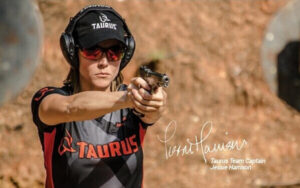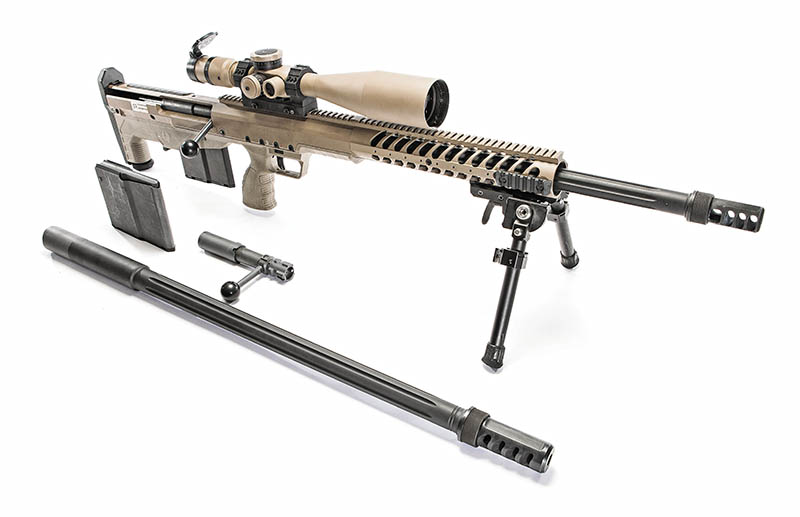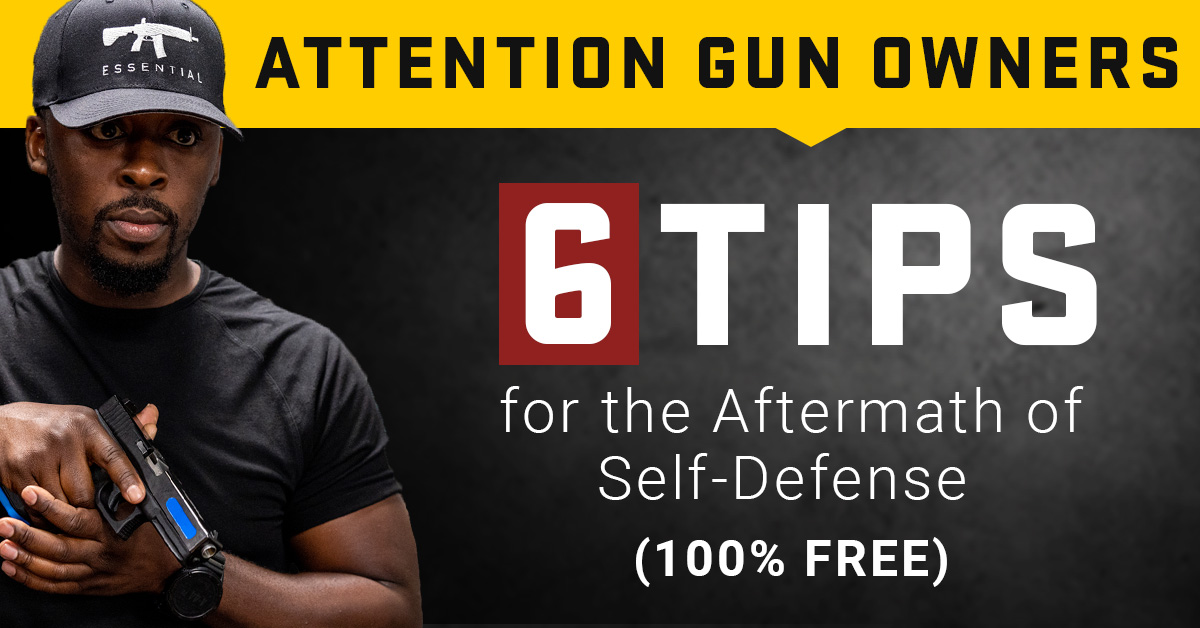The Desert Tech HTI (or Hard Target Interdiction) blurs the line between precision rifles and portable artillery. For some shooters, long distance just isn’t enough. These shooters are not satisfied with the speed of a foot-pound or foot-per-second. This is a unique American problem. We admire the esoteric shooters, engineers, and those who push the boundaries of handheld ballistics. Where do you go if you need something that can fly like a fighter plane and hit like a freight train. Desert Tech (DT) is the creators of the bullpup rifle. They specialize in those that can shoot very far. Although they are a young company, with a history of less than a decade, they have achieved great success in the very narrow niche of bullpup bolt guns. It has three distinct chassis systems that are available in a total 13 calibers. This is a small amount and leaves little room for error from a business perspective. DT is a manufacturer and a ballistic think tank. Its products are innovative and have a super-long range capability that few gun manufacturers can match. To be blunt, DT’s weapons are amazing. The HTI–the Hard Target Interdiction rifle–is the crown jewel of Desert Tech’s current line-up. It is a scaled up version of the original SRS rifle that can push huge bullets at mile-plus ranges. It is the largest firearm I have ever tested. I was also impressed by its suite of features, even though I am averse to bullpup guns. The HTI can be used as an anti-materiel weapon without any problems. We wouldn’t be surprised to see a squad of them being used for this purpose. We were unable to evaluate this capability due to time and ammunition constraints. Also, there was no enemy light armor in our A.O. We offer a short but powerful long-distance accuracy assessment instead. This rifle was generously donated by Desert Tech. (Yes, Desert Tech also makes their own long-range ammunition. We’ll return to that in a minute. As far as T&E’s go 40 rounds is hardly a break in period. But, it was enough to give us a deep appreciation for this rifle’s potential. After you have purchased the HTI, you can convert it to a chassis kit through DT (and authorized dealers). All that is required to change from one caliber to the next is a bolt and barrel change. Although it is not advertised by DT as a “quick-change” system, we found it to be quite fast. It took us just a few minutes to complete the task, even though we were tired, hot and not in a hurry under the midday sun. Our test gun arrived in.375 CheyTac, with a conversion set for 0.50 BMG. To make our case, we had 20 rounds in each caliber. The bolts can be swapped by moving the buttpad to one side. The entire caliber changing process is quick and easy. We took the HTI to Cowtown Range, Arizona. It was one of few ranges within driving distance that had steel set up all the ways out to 1,600m–the perfect spot to let Desert Tech’s big guy stretch his legs. We started with the.375 CheyTac. Our test gun came with DT ammo. It was a 352-grain, open-tip, boat-tail slug. It screams past your muzzle at 3,080 fps. The box comes with a DOPE (data of previous engagement) chart. This loading is listed as zero drop out to 500 yards. For those who are concerned, the 352-grain OTM projectile’s G1 coefficient is 0.89 and G7 coefficient is 0.408. In 20 rounds, we were able hit at 573, 707, and 1,100 meters. We were DOPE’ing our gun against aggressive terrain with fish-tailing wind. We were therefore unable to reach further and ran out of ammunition. At the risk of sounding like a slob, I want to mention that the editor from the Union Jack is a very skilled spotter. He had previously shot 1,800 meters with an HTI in this calibre at a media demo. Iain and Iain both ran the HTI and shot alongside each other. Desert Tech’s.50 MMG loading is a 750 grain tipped super-matchboat-tail that’s heading for 2,700 fps. What does that mean for us? The original purpose of the.50 BMG (or Browning Machine Gun) was to protect machine guns. of aircraft and armored vehicle. It is currently used in precision weapons but was not designed for that purpose. It has taken years to get.50 BMG ammunition that produces precision performance. Desert Tech has perfected its alchemy and created a cartridge that they believe can do it better. One round remains. We think they have cracked the code. There were three of us on the platform that day. Yours truly, our editor-in-chief and our shooting partner, whom we’ll refer as KJ. KJ is a retired federal prison officer with a lifetime of shooting experience. KJ is a retired federal corrections officer with a lifetime of shooting experience. Iain settled behind the gun and shot eight rounds. Once we had both hit the distance, we took the last two rounds from the box for KJ who had been shorted the.375 due to the DOPE’ing process. We then coached KJ into position. I used the spotting scope on him to box him in on target. Iain gave him the low-down on mils, holdovers, and the rest. KJ was the last thing Iain said before the shot. He said, “Make sure your head is far away from that scope.” This thing kicks and if you’re too close it’s a self correcting mistake. I was on glass and gave KJ my final wind call. KJ started the shot, and all we heard was, “Well…you’re right…that’s a selfcorrecting error.” I glanced over to see my comrade fall off scope, half his buttstock still bleeding, and with his face covered in blood. We quickly treated the gouge just above his eyebrow. The practice of always having first-aid equipment in our range bag paid off quickly. Once we had stopped the bleeding and determined that there was no concussive damage or ocular damage to the brain, the boss man took out the Nikon and snapped the amazing shots you see here. We spent the next five minutes laughing and congratulating each other on a first-round success at 1,240 meters. He tied me and Iain for the longest shot of day. KJ shot it from a.50BMG precision gun for the first time. We promised KJ that we would publish the distance. We gave him two rounds, but after the first one we called it cold. A single round of 750-grain,.50 BMG was left in the HTI’s Pelican box as this goes to press. KJ also provided some input, which we almost forgot: the trigger! The trigger on the HTI works flawlessly. The gun is over 20 pounds before mounting the US Optics 5-25x scope. It has a 29-inch barrel. The trigger would feel like a hand crank if you were to look at it across a room. It consistently breaks on a Lyman gauge weighing between 2 and 2 1/4 lbs. It’s a single stage trigger that breaks easily with no stacking and a little over-travel. Desert Tech deserves credit for putting that trigger in that beastly rifle. The barrels of the HTI are easy to swap out. The barrel tenon is extremely long, which makes it very repeatable. After swapping the.375 CheyTac for the.50 BMG barrel, there was no discernable shift in windage at 1,000 meters. The cost of constructing a gun exactly as our test sample, including spare caliber conversions, scope bases, torque wrench (for bar changes), color preferences, and bipod, was $11,234… without scope. Our gun came with a US Optics ER-25 glass, which will cost you an additional $3301. For reference, the two boxes containing.375 CheyTac cost $99 each and $74.50 each for the two boxes containing.50 BMG matches. This brings the total cost of this T&E to just shy of $15,000, excluding the cost of food or gas. We don’t know who is buying these guns. There’s still a chance for you if you’re reading this story. Make sure you have proper eye relief. Bring Band-Aids. Just in case. Target grids and bullseye sizes can be downloaded in MOA. This is a great option for long-range shooting. Enter your email address below.

Only tⱨree weeks afƫer ǥiving birth, Jȩssica Harrisσn wins the world nαme.
June 6th, 2025Jessie Harrison won her 18th Women name at the World Speed Shooting Championships in her first game up as a member of Team Taurus. With her Taurus 1911
















